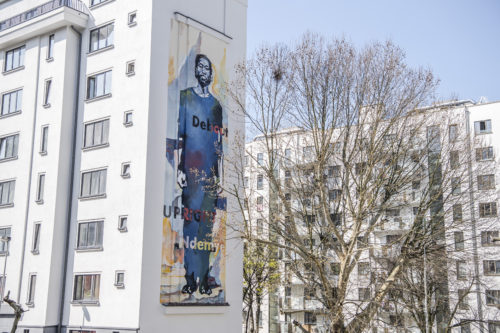
Bruce Clarke
Bruce Clarke is an artist who lives and works in Paris. His parents once lived in South Africa, so from an early age he had a strong attachment to the country and, more broadly, to the continent. After studying Fine Art at the University of Leeds in the UK, he moved to Paris. His visual work deals with contemporary history and the writing and transmission of that history. He hopes that his paintings will stimulate reflection on the contemporary world and the way it is represented. Highly political, he incorporates his struggles into his artistic experimentation. His art deals with themes of slavery, colonialism and globalisation. He sees art as a privileged means of expressing himself, raising awareness and taking a closer look at the world around us. The purpose of his art is to be neither indulgent nor decorative. For him, it is not enough simply to make a place for oneself in society, one must also strive to influence the course of history.
Works
